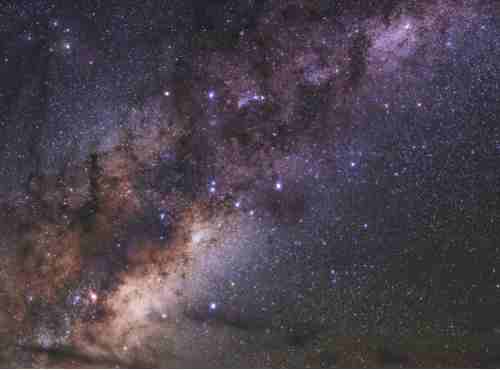As we approach March (with Spring at the Horizon!), we often ask ourselves what time it will become dark? After a long time with only a tiny window of light, indeed, we’re getting out of the dark? In this blog, we’ll discuss why it’s dark in winter, the time it takes to go dark after sun exposure, and when we can anticipate seeing it get darker in the next few weeks.
Darkness is as crucial as clear optics and clear skies when it comes to nighttime stargazing. Photographers, the perfect sunset is an essential aspect of their portfolios or collection. However, if you wish to get the most out of your precious time, you should be prepared in advance. This is because many different twilight times are not the same, and the skies may not be entirely dark after sunset.
Many factors contribute to this complicated process, and this is why the change between night and day is always a source of the source of legends, mythologies and works of art.
Why is it Not Dark as Soon as the Sun Sets?
If we were living on flat discs (like our predecessors thought) that the Sun touched the surface of it when it began to set, it would be dark and nighttime once the Sun would be out of view.
It is a sphere. Earth can be described as a globe. Has a thick atmosphere, and the Sun is 3 million miles distant. If it is set at the Horizon, the Sun shines on the Earth’s atmosphere over its surface.
If you’ve ever had to take an air trip at the beginning or the end of a long day, You’ve likely had this experience for yourself.
Imagine you’re flying over your companion, who is on the floor below. When the Sun sets below the horizon, you’ll still be able to observe it rising over the surface. It’s still shining onto the sky you’re flying through, but it isn’t reflecting off the ground beneath you.
The sunlight strikes the atmosphere with gas molecules, such as nitrogen and oxygen. The gases create light that bounces around or scatters. A portion from the scattered light reaches our eyes, and we see the globe lit for a brief period following the Sun’s set.
The True Night-time
Knowing what the evening time it is pretty straightforward. After all the twilight hours have been completed, the actual night starts. In essence, the night is in complete darkness when there isn’t any radiation due to the Sun. The best time to observe stars is in the evening, and astronomers should wait until he’s in a position not to see the Sun’s light fading towards the Horizon.

Scientifically speaking, the night is when the central point of the Sun is located between 18o and 90o beneath the Horizon. One thing to keep in mind is that the duration of the night is affected by a variety of aspects, such as the position of the equator and the seasons.
Why is it that the Sunsets when it sets in the West?
The most straightforward explanation of why the Sunsets at the East and sets in the West is to look at how it rotates. It spins around in the Easterly direction, implying that the Sun rises in the East then set to the West. If we don’t think about the tilt of Earth and the circular orbit around the Sun, the Sun spins around its axis to the East and the Sun sets for us all to the East first.
The Different Types of Twilight
Twilight is when the Sun is visible even though the Sun is lower than the Horizon. Twilight in the morning and evening, each with distinct phases: civil Twilight, the astronomical Twilight, and nautical night.
Each phase offers a distinct flavour and unique experience for astronomers and photographers. Let’s look at what each phase is about.
Civil Twilight
The civil twilight time that begins after sunset and continues until the central point of the Sun is 6 degrees lower than the Horizon. Objects are visible on the ground, and artificial lighting is not required if the fog does not exist. Astronomers can easily see Mercury and Venus in the golden hour.

This is also when photographers take amazing photos with no artificial light. The period of civil Twilight is referred to by the name of “golden hour” or “magic hour.” In this time frame, the diffraction of sunlight causes the white light to transform into reds, and the cloud change to a series of distinctive yellow, orange, pink, red and blue shades.
NAUTICAL TWILIGHT:
The other type of Twilight is darker and is observed when you are Sun is between 6 and 12 degrees lower than the Horizon. Nautical dawn and nighttime dusk are times in which most stars are visible to an unaided eye.
This means it’s an ideal time to enjoy celestial viewings. Cameras are not impossible during this period; however, most things will be dim and blurred. However, you could utilize a camera and a telescope to take some terrestrial photos. A telescope will pick up more light, and it is possible to capture a photo of a city during this period.
ASTRONOMICAL TWILIGHT
If the Sun is at or near 12 degrees below the Horizon and less than 18, we’re virtually entirely in darkness. This is referred to as the evening astronomical Twilight. As the name suggests, the astronomical dusk and dawn are marvellous for astronomical exploration. However, for ordinary photographers, the time isn’t beneficial unless you’re shooting photos of the illuminated city. Of course, astrophotography can be one of the exceptions.
The astronomical twilight period is typically indistinguishable from nighttime – the when the Sun is at least 18 degrees lower than the Horizon. This is especially true in areas with light pollution. While most bright objects can be visible during the astronomical night twilight, some dim and distant stars are only visible at dusk astronomical or before the dawn of astronomical astronomy.
How long will it take for the stars to appear at sunset?
It is necessary to wait until the absolute darkness or the real nighttime to observe the stars rising across the skies. It’s usually between an hour or two after the darkness is over, which means you’ll have to wait for a bit to take a trip to the stars. We call one of the twilight stages astronomical as it’s the best timing to take the telescope on.
Conclusion
In conclusion, there aren’t any definitive solutions to determine the time required to transition from daytime to Twilight and finally into the nighttime. But, you will likely discover this information in the future, and you will get different answers based on where you are.
For more information and assistance, visit the following websites.
Sunrise and sunset times in Los Angeles – Time and Date
https://www.timeanddate.com/sun/usa/los-angeles
What Time Does It Get Dark? – Gooroo Blog
https://www.gooroo.com/blog/what-time-does-it-get-dark/
How Long Does it Take to Get Dark After Sunset? – Love the …
https://lovethenightsky.com/how-long-after-sunset-is-it-dark/
How Long Does it Take to Get Dark after Sunset? – The Nine …
https://nineplanets.org/questions/how-long-does-it-take-to-get-dark-after-sunset/
At what time does it get dark in Chicago (Illinois)? | Sunset-times
https://www.sunset-times.com/chicago-illinois/
After the sun sets, how long does it take to get dark? – Odyssey …
https://www.odysseymagazine.com/after-the-sun-sets-how-long-does-it-take-to-get-dark/
At What Time Does It Get Dark After Sunset? – Astronomy For …
https://www.astronomyforbeginners.com/what-time-does-it-get-dark-after-sunset/
What time does it get dark? – Las Vegas Forum – Tripadvisor
https://www.tripadvisor.com/ShowTopic-g45963-i10-k232251-What_time_does_it_get_dark-Las_Vegas_Nevada.html